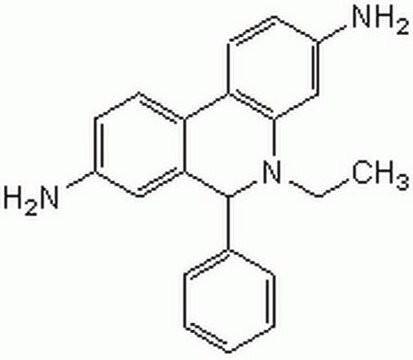287810
2′,7′-Dichlorofluorescin Diacetate
Cell-permeable fluorogenic probe that is useful for the detection of reactive oxygen species (ROS) and nitric oxide (•NO) and for the determination of the degree of overall oxidative stress.
Synonyme(s) :
2′,7′-Dichlorofluorescin Diacetate, H₂DCFDA, 2ʹ,7ʹ-Dichlorodihydrofluorescein Diacetate
About This Item
Produits recommandés
Niveau de qualité
Pureté
≥94% (HPLC)
Forme
crystalline solid
Fabricant/nom de marque
Calbiochem®
Conditions de stockage
OK to freeze
protect from light
Solubilité
DMSO: 5 mg/mL
Conditions d'expédition
ambient
Température de stockage
−20°C
InChI
1S/C24H16Cl2O7/c1-11(27)31-21-9-19-15(7-17(21)25)23(13-5-3-4-6-14(13)24(29)30)16-8-18(26)22(32-12(2)28)10-20(16)33-19/h3-10,23H,1-2H3,(H,29,30)
Clé InChI
PXEZTIWVRVSYOK-UHFFFAOYSA-N
Description générale
Actions biochimiques/physiologiques
Detection of reactive oxygen species (ROS) and nitric oxide (•NO)
Conditionnement
Avertissement
Reconstitution
Autres remarques
Ripple, M.O., et al. 1997. J. Natl. Cancer Inst. 89, 40.
Caro, A., and Puntarulo, S. 1996. Biochim. Biophys. Acta1291, 245.
Perez-Garcia, F., et al. 1996. Life Sci. 59, 2033.
Ramakrishnan, N., et al. 1996. Biochem. Pharmacol. 51, 1443.
Ferrer, A.S., et al. 1990. Anal. Biochem. 187, 129.
Informations légales
Code de la classe de stockage
11 - Combustible Solids
Classe de danger pour l'eau (WGK)
WGK 3
Certificats d'analyse (COA)
Recherchez un Certificats d'analyse (COA) en saisissant le numéro de lot du produit. Les numéros de lot figurent sur l'étiquette du produit après les mots "Lot" ou "Batch".
Déjà en possession de ce produit ?
Retrouvez la documentation relative aux produits que vous avez récemment achetés dans la Bibliothèque de documents.
Les clients ont également consulté
Notre équipe de scientifiques dispose d'une expérience dans tous les secteurs de la recherche, notamment en sciences de la vie, science des matériaux, synthèse chimique, chromatographie, analyse et dans de nombreux autres domaines..
Contacter notre Service technique











